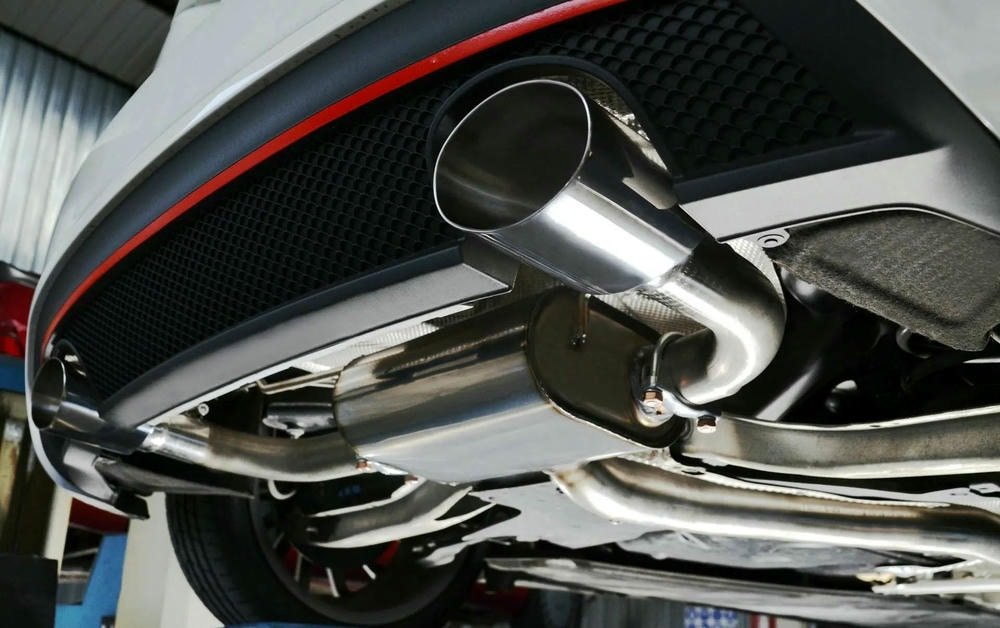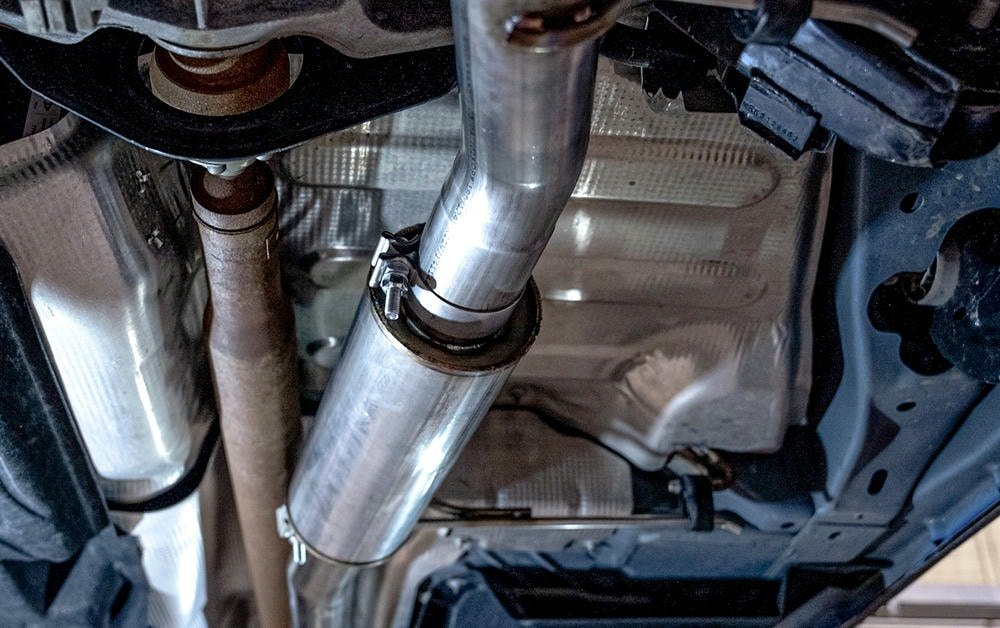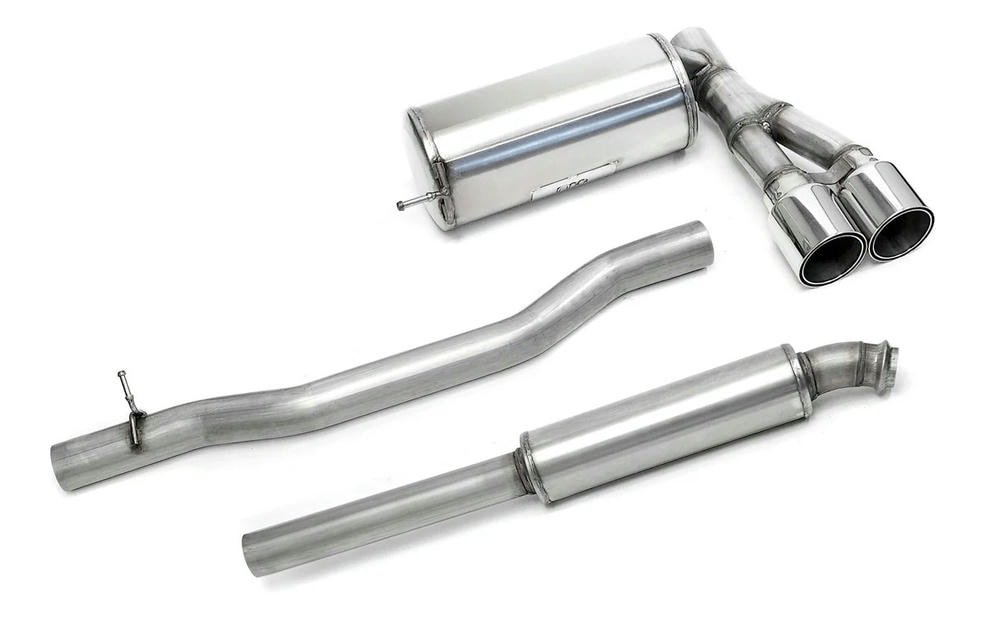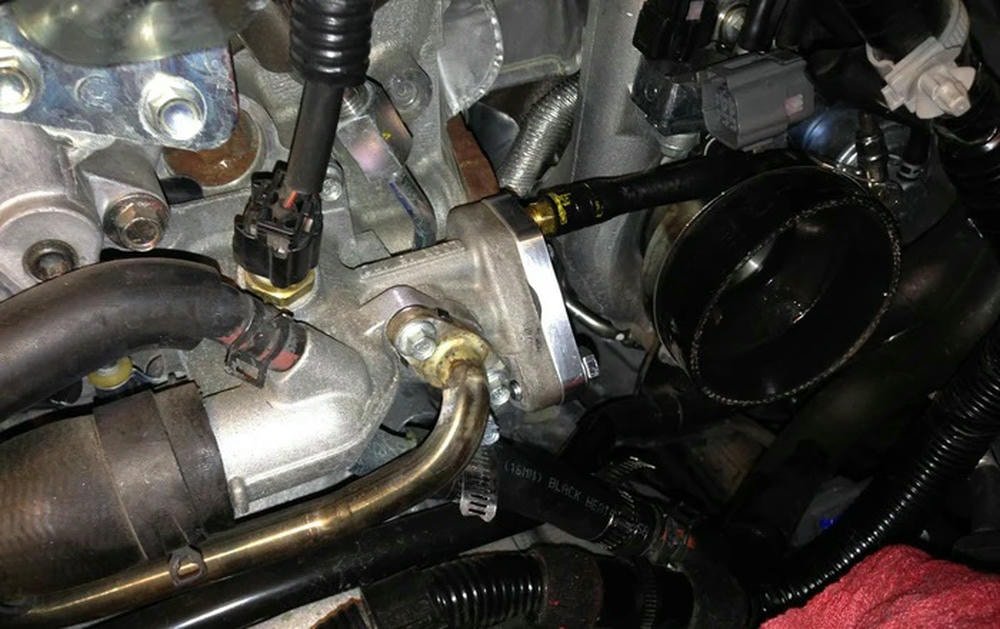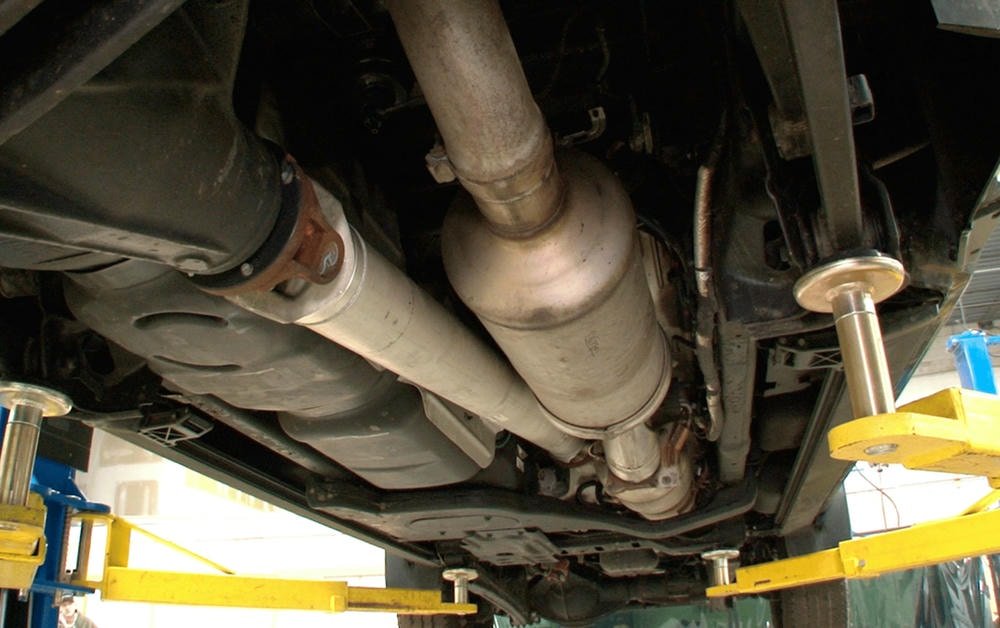Exhaust tips constitute more than a mere aesthetic detail on a diesel truck. They influence the truck’s speed and sound quality. Enhancing exhaust gas flow facilitates efficient engine performance, which renders these tips vital for optimal operation.
Regular maintenance of their cleanliness and shine not only improves appeal but also safeguards against potential rust. Checking them for any possible fissures or indications of looseness aids in circumventing serious problems in the future.
Lightweight materials such as titanium contribute to reducing the truck’s weight, which might lead to increased speed and decreased fuel consumption. Applying a coating or shield to exhaust tips can also defend them against the detrimental effects of salt and water.
Given their significant contribution, maintaining exhaust tips proves beneficial for truck owners who prioritize performance and aesthetics. There is a wealth of knowledge to be discovered about this seemingly insignificant yet influential component of your vehicle.
Table of Contents
TogglePerformance Impact of Exhaust Tips
Exhaust tips change how cars sound and run. They can make exhaust gases flow out faster, making the engine louder and lighter for better speed.
Influence on Exhaust Flow
Exhaust flow is crucial in diesel trucks. A good flow helps engines run better. When exhaust tips are used right, they make the exhaust gases leave faster. This means the engine breathes easier.
It also boosts power and fuel economy.
Choosing the right exhaust tip can make a big difference in your truck’s performance.”
Custom setups change how exhaust moves through pipes. They reduce back pressure. This lets the turbocharger work better, helping heavy vehicles move swiftly. Diesel owners often upgrade to aftermarket parts for this reason.
Better airflow leads to more miles per gallon and less smoke from burning fuel.
Sound Enhancement
Custom exhaust setups change how a diesel truck sounds. They make the engine roar louder and clearer. This is because they improve the path for the gases to flow out. A better path lets more air mix with fuel in the engine.
This mix helps your truck run stronger.
People who love their trucks use these setups to get that deep, powerful sound when they start up or speed up. They feel proud when their truck sounds different from others on the road.
Upgrading your exhaust can also help with fuel efficiency and reduce pollutants coming out of your tailpipe. It’s like giving your truck an easy power boost while making it sound cooler at the same time.
Weight Considerations (especially for high-performance vehicles)
High-performance vehicles, such as diesel trucks, benefit from maintaining a lower weight. This enhancement contributes to speed augmentations and fuel efficiency improvements. Utilizing lighter exhaust tips can significantly reduce a vehicle’s total weight.
Preferred material choices for exhaust systems often include titanium or stainless steel, owing to their lightness and substantial resistance against rust.
Employing lightweight components supports the truck’s ability to carry out under intense conditions. This approach further aids in better vehicle control and quickness. For those focusing on improving a diesel truck’s performance, evaluating the exhaust system’s weight becomes crucial.
The careful selection of suitable materials can contribute significantly to the truck’s operational efficiency and fuel consumption rate.
Maintenance Tips for Exhaust Tips
Keeping exhaust tips in top shape is key for any diesel truck owner. Simple steps like washing them often and applying metal shine can make a big difference.
Regular Cleaning to Prevent Corrosion
Regular cleaning is key to keeping exhaust tips in good shape and preventing rust. Here’s how diesel truck owners can maintain their exhaust tips:
- Use a degreaser: Apply a degreaser on the exhaust tips to break down dirt and oil. This makes cleaning easier.
- Rinse with water: After applying degreaser, rinse the exhaust tips with water to wash away the grease and dirt.
- Scrub with a brush: Use a soft brush to scrub the inside and outside of the exhaust tips. This removes any stuck-on debris.
- Wash with soap: Clean the exhaust tips with soapy water. A gentle soap helps protect the metal while cleaning.
- Rinse again: Wash off all soap with water. Make sure no soap remains as it can cause spots.
- Dry thoroughly: Use a clean cloth to dry the exhaust tips completely. Water spots can lead to corrosion if not removed.
- Polish for shine: Apply a metal polish designed for automotive use. Buff it into the metal for a protective shine that also prevents rust.
- Check fittings: Make sure bolts holding the exhaust tips are tight and secure to prevent rattling or loss.
- Inspect for damage: Look for signs of wear like small rust spots or cracks each time you clean, so you can address them early.
- Protect from harsh conditions: If possible, park your vehicle where it’s protected from rain and salt, especially during winter months, to reduce corrosion risks.
These steps will help diesel truck owners maintain their exhaust system’s appearance and functionality by combating rust before it starts.
Polishing for a Long-Lasting Shine
Keeping exhaust tips shiny makes a diesel truck look better. It also protects the metal from damage. Here is how to polish them for a long-lasting shine:
- Choose the right cleaning agent. Pick a non-abrasive one that’s safe for chrome-plated or stainless-steel exhausts.
- Use soft clothes or microfiber towels to apply the cleaner. They won’t scratch the surface.
- Rinse the exhaust tips with water before polishing to remove loose dirt and soot.
- Apply a small amount of polish to the cloth, not directly on the exhaust tip.
- Rub in small circles and cover the whole surface area for an even shine.
- Buff off any residue with a clean cloth for a mirror-like finish.
- For extra protection, apply a corrosion-resistant sealant after polishing.
- Inspect your work to make sure you didn’t miss any spots or leave streaks.
This method ensures that diesel truck owners can maintain their vehicle’s appearance and prevent rusting and corrosion on their exhaust tips, keeping them looking new for years to come.
Inspecting for Damage or Looseness
Inspecting exhaust tips on diesel trucks is crucial for maintaining performance and preventing issues. Damage or looseness can lead to bigger exhaust system problems.
- Check for cracks: Look closely at the exhaust tips for any small cracks. Cracks can grow over time and lead to leaks.
- Feel for looseness: Gently shake the exhaust tip with your hand. It should not move. If it does, it might need tightening or replacement.
- Look for rust: Rust is a sign of corrosion. It weakens metal and can cause holes.
- Examine weld points: The points where the exhaust tip connects to the exhaust pipe are important. They should be solid without any gaps.
- Spot discoloration: Changes in color could mean the metal is too hot and could be weakening.
- Listen for rattling sounds: Start your truck and listen. A rattling noise might mean something is loose or damaged inside the exhaust tip.
- Use a flashlight to see inside: Shine a light inside the exhaust tip to check for soot buildup which can indicate poor engine performance.
Through these steps, diesel truck owners can catch smaller problems before they turn into bigger ones, keeping their trucks running smoothly and efficiently
Protecting Against Harsh Environmental Conditions
Exhaust tips on diesel trucks face tough conditions every day. Salt, moisture, and extreme temperatures can damage them.
- Apply a protective coating like high-temperature wax or sealant to guard against moisture and salt. This creates a barrier that helps prevent rust.
- Install mud flaps on your truck. They reduce the amount of dirt and road salt that reaches the exhaust tips.
- Use rubberized undercoating near the exhaust area to shield it from harsh road chemicals. It also adds an extra layer of insulation against cold.
- Park indoors or use a vehicle cover when possible during winter or rainy seasons. This keeps the exhaust tips dry and reduces exposure to environmental damage.
- Clean exhaust tips regularly with a mild detergent and water mixture to remove dirt and grime buildup that holds moisture against the metal.
- After cleaning, dry exhaust tips thoroughly with a soft cloth to ensure no water is left to cause rust.
- Inspect for signs of corrosion or damage monthly, especially after winter or rainy seasons when damage is most likely to occur.
- Touch up any small rust spots immediately with heat-resistant paint designed for automotive use, keeping corrosion from spreading.
- During oil changes or routine maintenance checks, ask your tech to look over the exhaust system for any signs of wear or damage that you might have missed.
10 Diesel truck owners should consider stainless steel or chrome-plated exhaust tips as they offer better resistance against corrosion and heat discoloration.
Following these steps helps maintain the appearance and functionality of exhaust tips despite harsh environmental conditions faced by diesel trucks.
Common Issues with Exhaust Tips
Exhaust tips face problems like changing color because of high heat. They also can get rust or not fit right anymore.
Discoloration from Heat
Discoloration from heat on exhaust tips is a common issue that diesel truck owners face. This happens because the metal gets very hot when the engine runs. The colors can change to blue, yellow, or brown due to this intense heat.
These changes are signs that your vehicle’s system is working hard.
To deal with this problem, you need to check your exhaust tips often. Use cleaners made for removing tough stains and follow up with a polish designed for high-heat parts of your truck.
Protecting these parts from extreme temperatures is key to keeping them looking good.
Keeping your exhaust tips clean and polished helps prevent discoloration from heat.
Rust or Corrosion
Rust or corrosion on your exhaust tips isn’t just bad for looks. It can harm your truck’s performance over time. Metals in the exhaust system, like steel and alloy, start rusting when they meet water and salt from roads or pollution.
This weakens the metal, making it thin and creating holes.
To fight this problem, diesel truck owners should regularly check their exhaust tips for signs of rust or damage. Using products that resist rust helps a lot. Some people use a mix of tools like protective coatings or specialized cleaning solutions to keep corrosion away.
A person once said keeping their exhaust tips clean and coated added years to their lifespan compared with others who didn’t do regular maintenance.
Loose Fittings
Loose fittings on exhaust tips can introduce challenges for diesel truck owners. If an exhaust tip is insecure, it could resonate or even detach during operation. This can affect the truck’s function and also introduces a safety hazard for other drivers.
A diesel owner might identify a loose fitting if they discern unusual sounds emanating from their exhaust system.
To rectify this complication, one requires basic tools such as wrenches and screwdrivers. Strengthening the clamps that keep the exhaust tip secure often rectifies the issue. Sometimes, substituting worn-out bolts or clamps is mandatory.
Undertaking this task independently conserves money on repairs and maintains the vehicle’s consistent operation. Individuals who have attempted this found that ensuring firm fittings helped with their truck’s comprehensive performance and efficiency of the emissions control systems.
Conclusion
John Miller, an automotive engineer with over 20 years of experience, shares his insights on exhaust tips. He studied at a top tech university and has worked on many high-performance vehicles.
His work includes research on how to make cars run better and last longer.
Miller talks about how the size and shape of exhaust tips can change how cars sound and handle. He points out that lighter materials help make cars go faster. Cleaning and checking exhaust tips often keeps them working well, he adds.
He also stresses safety and honesty in making these parts. They must meet rules set by groups that check car safety standards.
Miller suggests using stainless steel for its strength against rust as a practical tip for everyday use. He advises looking closely for signs of damage or loose parts to avoid bigger problems later.
He compares different types of exhaust tips, noting each one’s good and bad sides. For example, some might look great but cost more or need more care to keep looking good.
Finally, Miller says taking care of your car’s exhaust tips is worth it for diesel truck owners who want their trucks to perform well and last a long time.
FAQs
What is the performance impact of exhaust tips on vehicles?
Exhaust tips can influence your vehicle’s performance, especially in turbocharged engines. Engine tuning with aftermarket exhaust options can enhance mileage and EPA fuel economy while reducing emissions like nitrogen oxides and carbon monoxide.
How do I maintain my vehicle’s exhaust tips?
Maintaining exhaust tips involves regular cleaning to prevent rust and corrosion resistance, inspecting for any issues such as leaks or blockages, ensuring the catalytic converter functions well, and checking that all connections are securely welded.
Can aesthetic upgrades affect the performance of my car’s exhaust system?
While aesthetic upgrades like new tail pipes or mufflers might seem purely visual, they can also improve engine exhaust flow when correctly installed by a trusted dealership using advanced automotive technology.
How does preventing rust contribute to better performance in an exhaust system?
Rust prevention is critical for maintaining optimal function in your vehicle’s exhaust system parts including pipes and mufflers. Corrosion could lead to blockages affecting air-fuel mixture combustion; hence it’s crucial to use protective gear during maintenance checks.
What should I look out for when troubleshooting my car’s exhaust tip issues?
When troubleshooting problems with your car’s tail pipe or other parts of its emission control system, you need to consider signs such as unusually loud noises from the muffler area, decreased fuel efficiency indicating possible carbon monoxide (CO) leakage among others.
Is it important to have a professional inspection done on my car’s aftermarket exhaust setup?
Yes! Regular inspections at authorized service centers ensure compliance with regulations set by agencies like EPA regarding particulates emission levels which could be harmful if not properly managed through eco-friendly practices.

